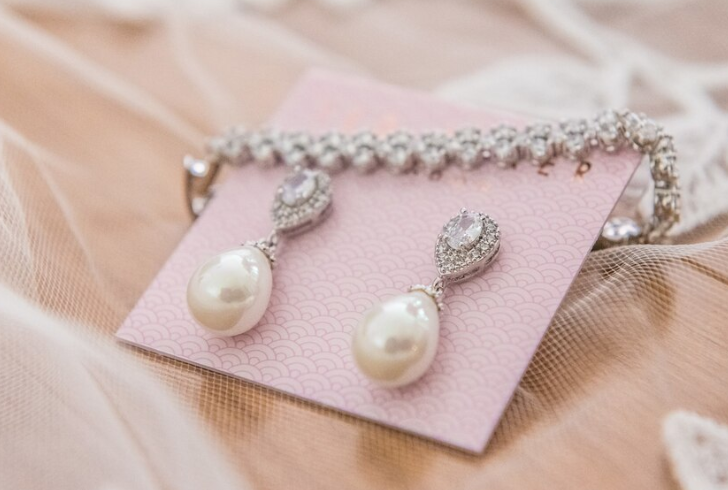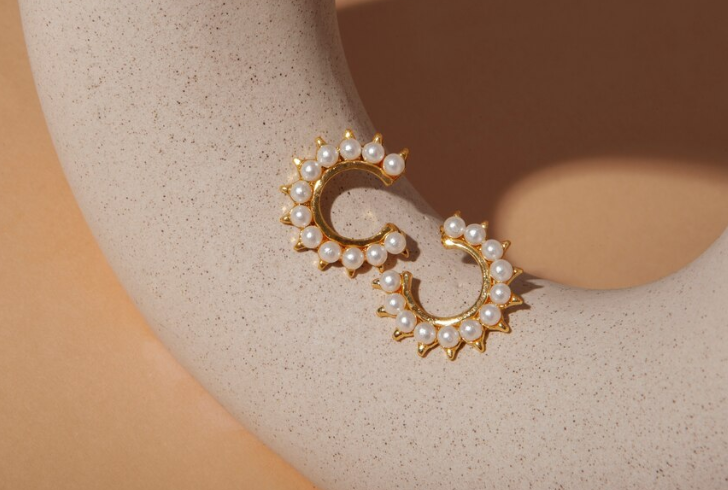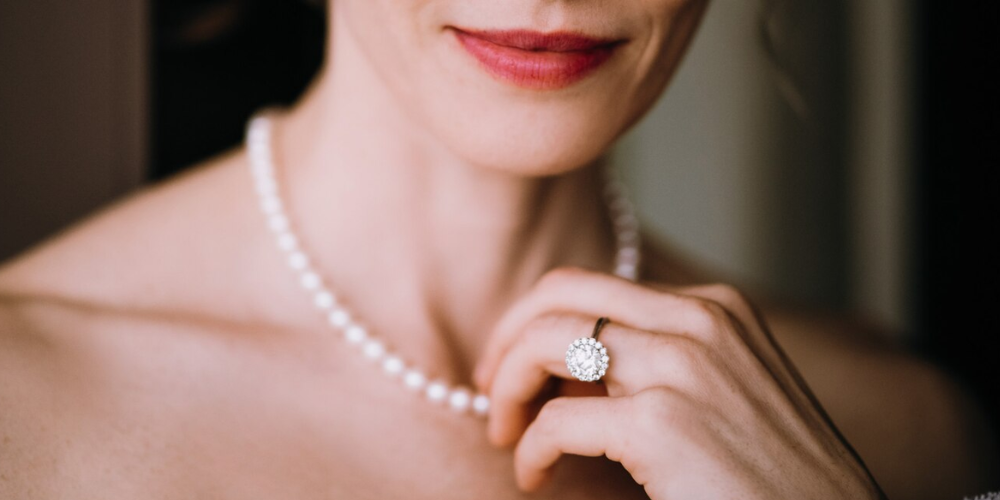Pearls have long been cherished for their elegance and allure, symbolizing both beauty and luxury across cultures. However, distinguishing between genuine pearls and their imitations can be challenging, especially for those unfamiliar with their characteristics. This guide provides clear and practical methods on how to tell if pearls are real, ensuring you make informed decisions when buying or evaluating pearl jewelry.
Understanding Real vs. Fake Pearls
When learning how to tell if pearls are real, start by observing their surface and texture. Authentic pearls are formed naturally and exhibit unique imperfections. They typically have a slightly uneven surface with minor bumps and ridges. On the other hand, fake pearls, often made from plastic or glass, have a more uniform appearance and smoother surface.

Freepik | wirestock | Genuine pearls have natural imperfections and a slightly uneven surface with minor bumps and ridges.
To assess a pearl’s authenticity, gently rub it against your teeth. Genuine pearls will feel gritty or textured, while imitation pearls will feel smooth. Another indicator is the weight; real pearls are denser and thus heavier compared to their artificial counterparts. Additionally, examine the drill hole of each pearl. Natural pearls usually have irregularly shaped holes due to their organic origin.
Detailed Examination of Pearls
1. Examining Surface and Texture
When examining a pearl necklace, pay close attention to the surface texture and overall weight. Real pearls have a smooth, even texture with minimal blemishes, whereas imitation pearls may appear too perfect or exhibit noticeable irregularities. Additionally, real pearls tend to feel heavier in the hand due to their denser composition, which contributes to their authentic feel and durability.
2. Assessing Lustre and Shine
The luster of a pearl is a hallmark of its authenticity. Genuine pearls display a deep, iridescent shine that reflects light beautifully. Hold the necklace under natural light and observe how it gleams; authentic pearls will exhibit a mirror-like finish, whereas fake pearls often appear dull or cloudy. Any signs of chipping or discoloration on the pearl's surface may also indicate its imitation nature.
3. Checking for Smoothness and Uniformity
Run your fingers along the pearls to feel for their smoothness and uniformity. Real pearls typically have a consistent round shape with no visible flaws or rough edges. Examine the string that holds the pearls together: a genuine strand will feature knots between each pearl to prevent them from rubbing against each other and sustaining damage over time.
Spotting Irregularities and Authenticating

Freepik | Genuine pearls are valued for their unique imperfections, which enhance their natural beauty.
To further authenticate a pearl necklace, look closely for irregularities such as bumps or variations in color. Genuine pearls are prized for their unique imperfections, which add to their allure and natural beauty. Use a magnifying glass to inspect the pearls up close; real pearls should have subtle ridges or imperfections that are absent in synthetic pearls, which often appear overly smooth or uniform.
Valuing and Verification
A genuine pearl necklace is not just a piece of jewelry but a valuable investment. To verify its authenticity, consider consulting a professional jeweler for an appraisal. They can conduct additional tests, such as an acid test or examination of the pearls' drill holes and clasps, to confirm their genuineness. Genuine pearls will withstand these tests, showcasing their enduring quality and craftsmanship.
Ensuring Authenticity
Determining whether a pearl necklace is real involves careful observation and understanding of its unique characteristics:
- Look for imperfections and irregularities that are typical of genuine pearls.
- Assess the smoothness and weight of each pearl to gauge its authenticity.
- Examine the luster and shine under natural light for a genuine reflection.
- Consult a jeweler for professional verification and appraisal if needed.
By applying these techniques, you can confidently determine how to tell if pearls are real and ensure that your investment is truly worthwhile.

